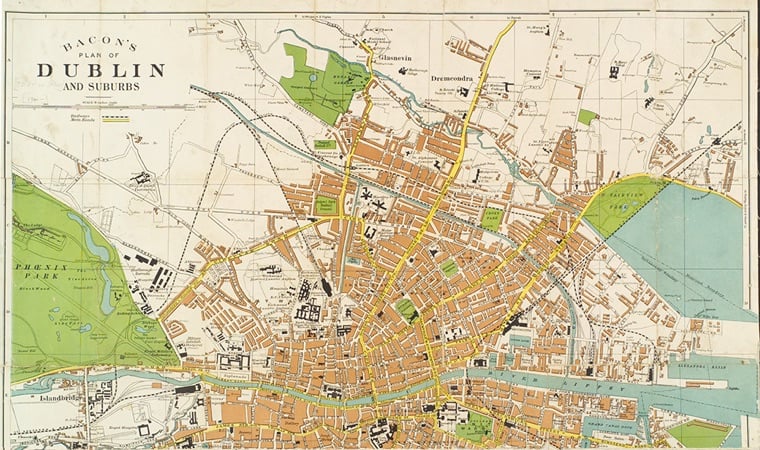Eternal text-cities

Sometimes, cities are not only the places where stories happen but characters in and of themselves. Here Tyler Malone explores the works of Joyce, Döblin, and Dos Passos and their city centred novels.
These three novels are modernist city novels of the interwar period that move beyond story and character to build structures and trace movements, reconstructing modern metropolises that a world war would soon change forever. Joyce, Dos Passos, and Döblin fashioned not novels but eternal text-cities in which the reader may witness, wander, get lost. […]
Cities are cement and furniture, building and bustle, things that stay still and things that move. Of course, things that stay still in a city can suddenly, and will eventually, move, grow, change, decay, disappear. Buildings crumble, stores go out of business, streets age, accumulating faultlines like faces. Things that move can and do also momentarily pause. A busker stares up at a pedestrian silhouetted by the sun, still as a statue, his last note lingering. The maelstrom of traffic often screeches to a halt.
In fact, those novels are not only city centred but text-cities in themselves:
In other words, Ulysses is not an atlas of Dublin, it is a Dublin; Berlin Alexanderplatz, likewise, is a Berlin. These are not novels; they are cities unto themselves, writ in text of stone and concrete. […]
For the reader-flâneur, linearity isn’t important; it’s about wandering through the text and seeing what one sees, letting the city speak.
—
Also on cities and books; Justin McGuirk reviews at length Richard Sennett’s Building and Dwelling: Ethics for the City on cities as communities, as buildings, and on his vision of open cities.
It also extends to the offices of tech giants like Google, which supply everything a neighborhood has to offer without employees needing to leave the building. Each of these is, for Sennett, a ghetto. Instead, he argues for a city that embraces difference, a place of porous membranes and spatial invitations. […] (emphasis mine)
[The book] has an almost Taoist attachment to harmony and balance. Give architects and planners too much control and the cité suffers; too much faith in the citizen and the ville withers.
(First article via @matthieudugal)





Stay Connected